Contents
Raincoat mushrooms belong to the champignon genus. However, due to their peculiar appearance, they are perceived differently than traditional representatives of this family. The surface of the raincoat cap is uneven, covered with slight layers resembling spines or needles. Due to the fact that many powder-like spores form in the fungus, it is popularly called dust, tobacco sponge or tobacco mushroom. Raincoats are often found in forests and grow well in almost any type of soil.
Where to find it and in what season?
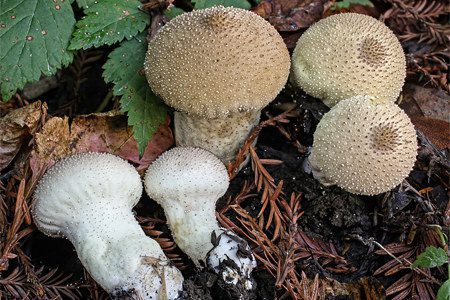
The puffball mushroom is found in mixed and coniferous forests, on lawns, fields, clearings, forest edges, and even in gardens. They grow in groups, but sometimes single specimens sprout. The pear-shaped raincoat feels great on the rotting trunks of deciduous trees.
Unlike other types of mushrooms, the puffball does not have a stem. The mushroom is a closed ball of white, yellow or brown color. In some species, a pseudopod can be seen, which is actually part of the body of the fungus. During maturation, the raincoat opens the upper part of the cap, from which many spores are released. The wind carries the spores to near and far areas, so the fungi disperse to new places.
In warm regions, raincoats are found already at the end of May. Usually mushroom pickers collect them from July to October. To collect raincoats, it is better to go out into the forest on the second day after the rain. The fact is that mushrooms of this species actively absorb water from the soil. Immediately after rainfall, raincoats swell and become like jelly.
Types of edible puffball mushrooms
Most raincoats are edible. However, there is an important nuance – the mushroom can be eaten while it is white. The young raincoat has a delicate aroma, exquisite taste and delicate structure. After changing color, raincoats are not collected.
Giant
The giant raincoat (lat. Langermannia gigantea) is popularly called golovach or gigantic mushroom because of its incredible size. It grows in fields, meadows or deciduous forests. In central Russia, this type of raincoat is rare.
The weight of one such raincoat can reach 8 kg, and the diameter can be up to 50 cm. Outwardly, the mushroom is a large ball. The shape may be slightly flattened. The skin of the cap is smooth or covered with flake-like skin. The young mushroom is whitish in color, as it ripens, it becomes dirty green. The structure of the pulp is crumbly, very tender.
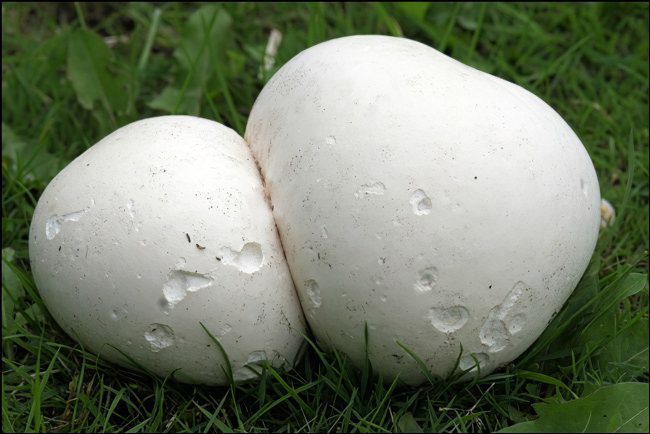
pear-shaped
Pear-shaped puffball (lat. Lycoperdon pyriforme) got its name because of the shape of the fruiting body, similar to a pear. The mushroom can grow up to 4-5 cm, and in the widest part, the diameter of the cap can reach 7-9 cm.
The fruit body of the pear-shaped raincoat is covered with a double skin, has a short pseudopod. The outer shell of a young fungus is leathery, prickly, creamy white in color, covered with scales, cracks. When the fungus ages, the spikes fall off, the outer skin cracks, and the inner skin becomes gray-brown or yellow. After this, the inner shell opens, which covers the spores.
The internal fibrous mass of a young raincoat is distinguished by a pronounced whiteness, very fragrant, but insipid in taste. The collection time for pear-shaped raincoats is from July to October.

Thorny
Prickly raincoat (lat. Lycoperdon perlatum) is called pearl. Other popular names are more prosaic – needle, blackberry. The spiny mushroom is not large – it grows up to 4 cm in length and up to 7 cm in diameter. The shape of the raincoat is pear-shaped, slightly flattened.
The fruiting body is covered with a spiny or warty membrane. The young puffball is white, becoming gray or purple-brown as it matures. A change in color indicates that the mushroom should not be eaten. Spiky puffball is harvested from the beginning of July to the first days of September.
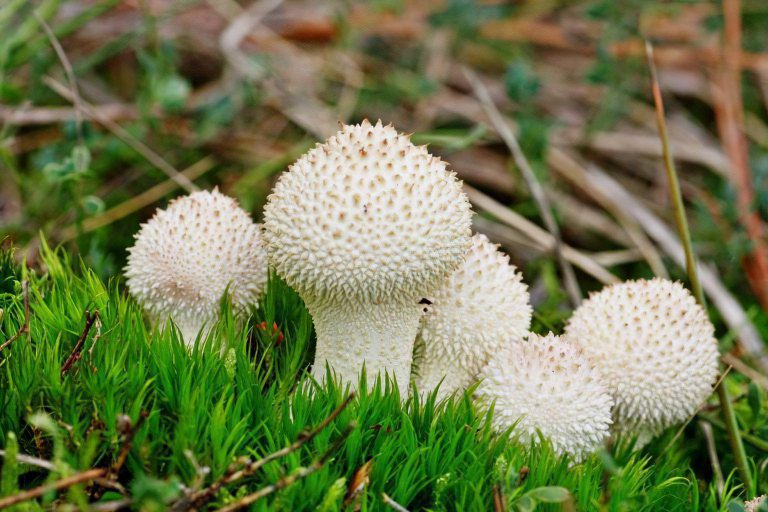
Golovach oblong
Golovach oblong (lat. Calvatia excipuliformis) looks like a small ball, pulled together at the bottom. The outer film is smooth at first glance, but if you look closely, you can discern small, thin spines. White internal fibers indicate that the mushroom is young. In a mature raincoat, they are very dark, almost black.
Golovach oblong can be confused with a false raincoat. The key difference is that the edible mushroom is covered with needles and does not have a pseudopod.
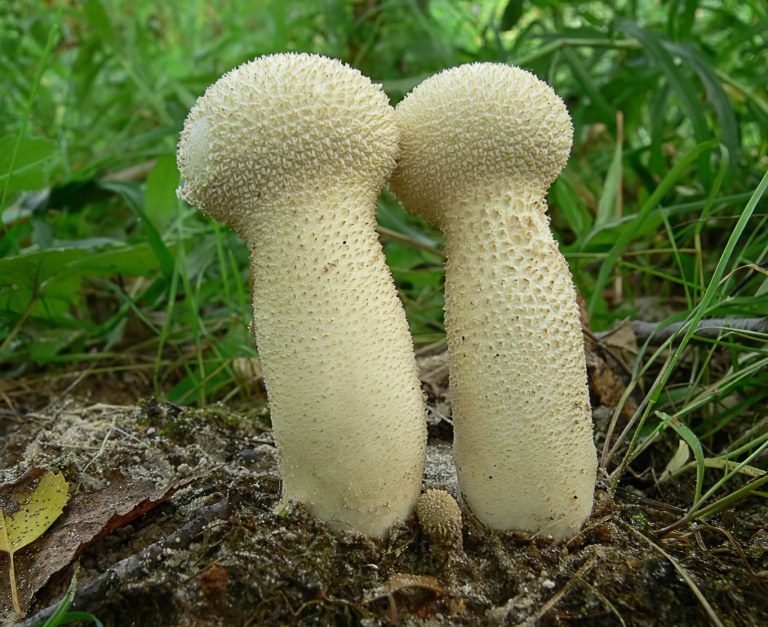
Meadow raincoat
Meadow raincoat (lat. Vascellum pratense or Lycoperdon pratense) is a mushroom in the form of a white ball with a wrinkled pseudopod. As the raincoat matures, the outer skin becomes dense, acquires a brown color. Meadow raincoat can be called miniature – its size ranges from 1 to 5 cm in height and diameter.
Gather meadow mushroom on open lawns and forest edges. Only young raincoats with snow-white flesh are suitable for food. The inside of mature mushrooms is brown.
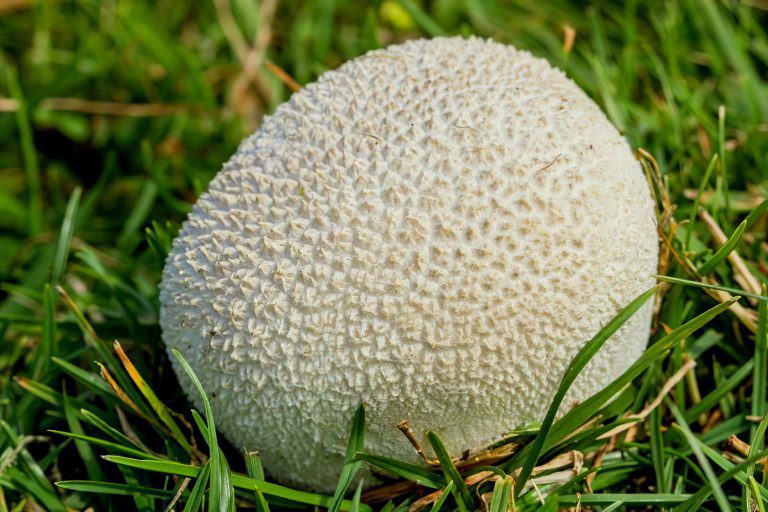
[Video] Useful and healing properties of a raincoat:
Composition
The study of the composition of puffballs began after studying the use of the fungus in food. The results of the studies confirmed that the raincoat can be used in therapy for:
Increasing the protective properties of the body.
Stimulation of metabolic processes.
Activation of the functions of the cardiovascular system.
The need to stop bleeding.
Effects on tumors of various genesis.
A pronounced therapeutic effect is provided by the rich composition of the raincoat pulp. It contains minerals, vitamins and amino acids, antibacterial substances:
Calcium is essential for bone health and building new cells.
Sodium – maintains acid-base balance, activates enzymes.
Chromium – is involved in the metabolism of proteins, carbohydrates, is involved in immune reactions.
Iodine – supports the health of the thyroid gland, improves cognitive processes.
Potassium is necessary for the health of the heart, muscles and blood vessels.
Iron is an essential element of hematopoiesis.
Fluorine – is responsible for the density of tooth enamel.
Phosphorus – is involved in the mineralization of bone tissue.
Molybdenum – enhances the synthesis of amino acids, neutralizes harmful compounds.
Zinc – necessary for the health of the genitourinary system, the synthesis of sex, anabolic hormones.
Rubidium – participates in antihistamine reactions.
Phenylalanine – supports the health of the central nervous system.
Cysteine - essential for collagen synthesis, hair and skin health.
Tryptophan – is involved in the secretion of serotonin, provides psychological health.
Methionine – removes harmful substances, pathogenic microbes from the body.
Vitamin D is involved in all vital processes in the body from the preservation of bone tissue to conception.
B vitamins are necessary for the preservation of nerve fibers, the health of the spinal cord and brain.
Vitamins K, C, E, H, PP are involved in biochemical reactions in the synthesis of hormones, enzymes, affect blood quality, and have antioxidant properties.
With such a rich composition, 100 grams of raincoat mushroom recorded:
Squirrel – 4 g.
Zhirov – 1 g.
Carbohydrates – 1g.
The same volume accounts for only 27 kcal, which makes the raincoat an excellent component of dietary nutrition.
Possible side effects
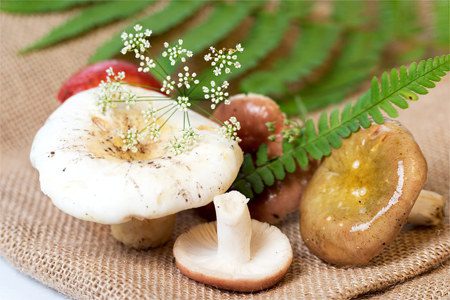
Ripe raincoats, as well as those that were collected in ecologically unfavorable areas, along roads, in the vicinity of factories. These mushrooms, which have collected toxins, radionuclides, harmful compounds, acquire toxic properties.
The use of raincoats is contraindicated:
With allergic reactions to any kind of mushrooms.
Pregnant and lactating women.
Children under the age of 10 years.
Persons with kidney disease.
During the period of exacerbation of gastrointestinal diseases.
With individual intolerance to any mushrooms.
Raincoats are one of the most delicious and juicy mushrooms with the most delicate, incredibly tasty pulp. It is difficult to pass by raincoats in the forest due to their unusual shape and bizarre appearance. When picking mushrooms, you should be very careful not to get poisonous specimens into the basket. There are false raincoats that do not pose a danger, but are unsuitable for food.
Young specimens are used for food, in which the flesh is snow-white in color. Raincoats are boiled, fried in a pan or a fire, baked with other vegetables, combined with a variety of sauces. In marinated and dried form, they perfectly retain their nutritional, medicinal properties.









